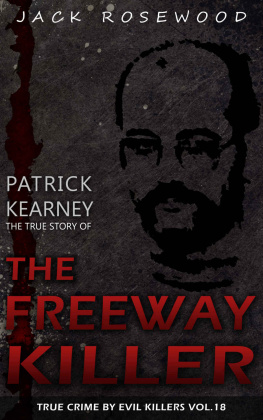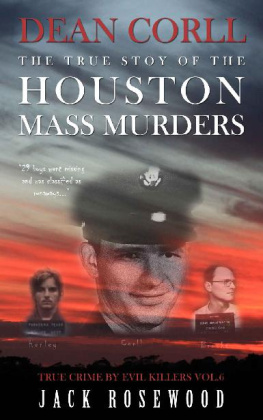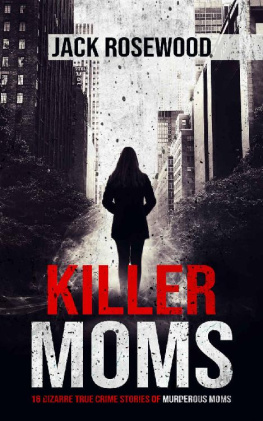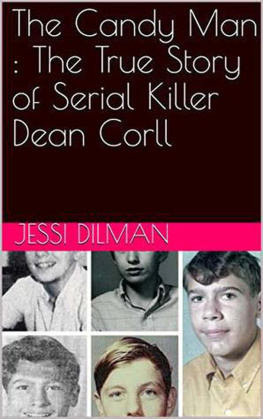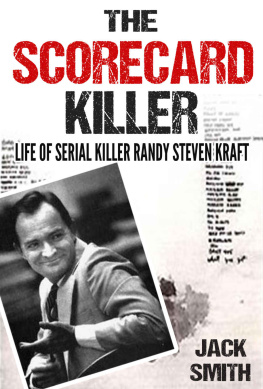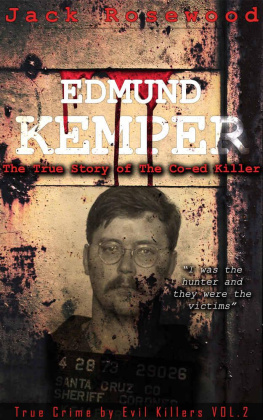Introduction
Patrick Wayne Kearney was eight years old when he began having fantasies of murder.
And you know how it can be with fantasies. Sometimes, the imagination satisfies, and other times, it only accentuates the hunger.
Kearney was hungry, and that need of his was eventually going to be sated.
The oldest of three boys, Kearney was born on September 24, 1939, in Los Angeles, to parents George and Eunice Kearney. George was a member of the Los Angeles Police Department, while Eunice stayed home to care for the children, Patrick and his younger brothers, Michael and Chester.
The City of Angels was a lucky place for a kid to grow up, or would have been, had the future serial killer not been sickly as a child, which made him an easy target for school bullies.
Despite having an IQ of 180 which makes him, psychologists say, a genius he was unable to find ways to win over his peers, even after his parents moved to Arizona, where he switched schools and had access to a new group of classmates. But everythings hotter in Arizona, and so was the bullying Kearney faced at his new school. The bullies were the same, and Kearney was still an easy target.
Later on, after college and a stint in the military, Kearney gave marriage a try, but the short-lived union ended in divorce.
Then, as fortune would have it, he met the man who would eventually become his longtime lover, and when Kearney fled back to California to start over yet again, his new partner David Hill soon followed.
As an adult, Kearney had developed into a man with the buttoned-up look of an accountant, sort of like New Jerseys John List, who was a fugitive for almost 18 years after murdering his entire family and moving across the country to take on a new identity. Kearney appeared mild-mannered and studious, and the electrical engineer could have had it made. He landed an engineering job at Hughes Aircraft, founded by none other than the eccentric and successful Howard Hughes, whose friends and lovers included Katharine Hepburn, Bette Davis, Ava Gardner, Olivia de Havilland, Ginger Rogers, Gene Tierney and Joan Fontaine.
But Kearney couldnt really shake that troubled childhood of his, no matter what good fortune later came his way.
While he didnt learn to hobnob with the rich and famous during his years at Hughes Aircraft, he did take away one thing from his time in California. He learned that his buttoned-up looks were appealing enough to some of the young men who were part of the burgeoning gay scene, and Kearney took advantage of it.
Unfortunately for many of those boys and young men, usually thin and blond with side-swept long hair, they resembled Kearneys childhood bullies and they would be the ones forced to pay for the others torment, as Kearneys fantasies festered and finally burst open in a bloody torrent of gunshots, necrophilia and dismemberment.
This guys got a masters degree in murder, said Los Angeles County detective Louis Danoff.
Chapter 1: Murder in the making
Growing up, Patrick Wayne Kearney described his childhood as comparable to the nightmare youth suffered by fictional teen Carrie White in the Stephen King novel of a high school prom gone wrong. The story was brought to life on the silver screen in a movie starring Sissy Spacek, who sought deadly revenge on her fellow students after being drenched in pigs blood while wearing the homecoming queen crown.
The oldest of three boys, Kearney did not get the luck of the draw, and was a slight, effeminate, wimpy little boy who wore glasses with thick lenses. His classmates didnt let him forget any of it for a minute. His fellow students called him girly-boy, queer boy and little faggot.
Unfortunately, the cruel bullying was occurring during some of the most important, formative years of Kearneys life.
The consequences of bullying
Bullying has long been linked to criminal behavior, in part because the emotions and experiences that shape our thinking are for the most part formulated in our younger years, experts say.
Not only do our experiences as youth shape how we think, they also shape how we see ourselves, since peers have the most influence on our self-esteem.
In 1902, sociologist Charles H. Cooley suggested that our perception of ourselves comes from how others see us, and our peers opinions essentially represent a mirror image of ourselves.
As for Kearneys looking glass?
As a kid he was often beat up by others since he was small and called queer by his peers though he was interested in girls, said psychiatrist John McMullen.
Kearney eventually established a long-term romance with a man, so it could be his classmates saw something in him that he himself did not, or that their cruel words sparked ideas at a time when he was developing sexually.
Somebody would pay
While its likely that during the time he was being bullied, he outwardly did what most tortured children do - which is to not only pretend not to hear the words, but to also pretend they dont hurt - inside, Kearney seethed, and he had no intention of forgetting any of the pain his classmates caused him.
Instead, all the while he was being teased and tormented by his peers he was perfecting his fantasies of murder, which were growing more detailed and heinous with every passing year.
Victims [of bullying] are at greater risk for later criminal activity, wrote Dr. Laura Finley, an Assistant Professor of Sociology and Criminology at Barry University. Studies have shown victims may act out later in life as a way to feel powerful. Many victims become the aggressor.
For Kearney, whose torment seemed relentless, aggression was putting it mildly.
Kearneys simmering rage took hold early, and by early adulthood it had boiled over.
He was desperate for revenge, and there was likely no turning back once his fantasies of murder became linked with sex the ultimate power play for someone who has felt like an underdog for much of his life.
His later actions would suggest that for Kearney, those endless unpleasant experiences with his peers developed into a self-loathing that eventually turned outward. Unable to exact revenge on his tormenters, he instead found targets that served as stand-ins or substitutes for those who had bullied him.

